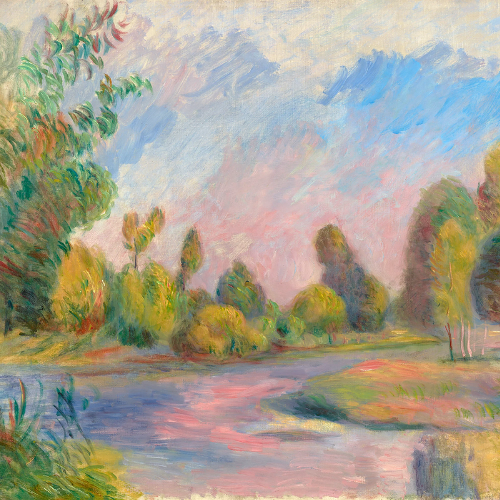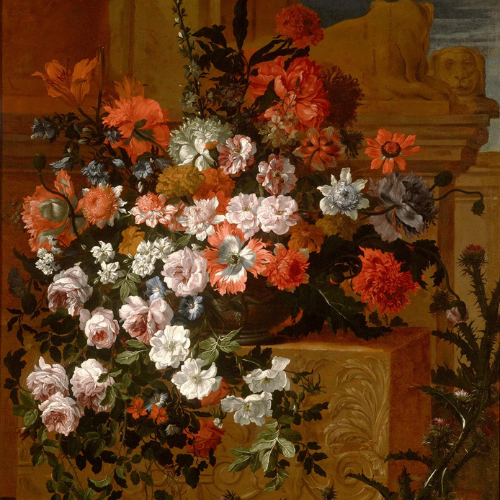Deux Masterpieces from Jacob Petit
View the original article here
PERFUME BOTTLE QUARTERLY, Spring 2014 —
By Elizabeth and Frank Creech, with Susan Lapene Photographs courtesy of M.S. Rau Antiques, with the kind permission of Susan Lapene
Jacob Petit, born in 1796, began work as a youth at the porcelain factory at Sevres as a painter. Talented and ambitious, he purchased a porcelain factory at Fontainebleau in 1830. Here his creativity was unleashed and he produced some of the finest hard-paste porcelain of the period.
Petit's style was an incredibly exuberant neo-Rococo, featuring bold scrolling, intricate detail and rich colors with gilding. This style was especially popular during the reign of Louis-Phillippe (1830-1848)
Petit's mastery of his medium and his luxurious decoration combined into truly dazzling creations. Jacob Petit won rave reviews at the 1834 Exposition des Produits de L'Industrie in Paris, where his elegant work was described as novel, bold, and original, and was praised for its technical virtuosity. By 1839 he employed approximately 200 artisans and was well established as one of a handful of the elite French hard-paste porcelain manufacturers. Petit sustained his great success, finally moving to Paris in 1863.
We show two spectacular creations of Jacob Petit: first, an absolutely stunning Parfum Flacon, 9 1/2 inches in height; and a fabulous Brule Parfum, which stands nearly 20 inches high. We also show the remnant of an 1834 engraving of the Brule Parfum, taken from a volume by Stéphane Flachat.
These masterpieces of Jacob Petit fill our senses to the brim with the lavish shapes, regal colors and extravagant decorations of his unique interpretations of Rococo.
 PARFUM FLACON
PARFUM FLACON
Purest white French hard-paste porcelain parfum flacon stands upon four scrolled feet supporting the four lobes of the body. The slender neck features four cascades of descending loops. The finial/stopper is a parcel gilt ringed dome. Painted decoration to the flacon is French Blue and Gold. Finely detailed florets and buds of many sorts and hues fill every nook and cranny of the piece. Signed "J.P." in the porcelain.
 BRULE PARFUM
BRULE PARFUM
In this porcelain brule parfum, a Greco-Roman brazier is re-imagined in dramatic Rococo form. A central container, with floral reserves within gilt scrollwork on a green ground, features a delicate openwork rim. The container is guarded and supported by three majestic zoomorphic lions. The pierced cover, topped by a gilded flame finial, completes the ancient effect. Standing upon a stepped faux marble rouge base, the luxury of Petit's porcelain creation is clearly evident. This exceptionally rare piece was created by Petit for the Exposition des Produits de L'Industrie in 1834, where it was enthusiastically received. Features Blue "J.P." monogram mark.
True, or hard-paste porcelain is a tough, white, non-porous ceramic material. Its making was a tightly guarded Chinese secret going back many centuries to the Han dynasty. It was introduced into Europe during the Ming dynasty, creating such a craze that it fetched outrageous prices and was referred to as "white gold."
The Elector of Saxony, Augustus the Strong, had an insatiable passion for the blue and white China ware and became an avid collector.
Many efforts were made throughout continental Europe and England to duplicate the formula for this coveted material, all of them failing. .... until Ehrenfried Walther von Tschirnhaus, a brilliant physicist, with the assistance of the alchemist, Johann Friedrich Bottger, discovered the secret recipe. A factory was established at Meissen, and its production of true hard-paste porcelain held a very lucrative monopoly for the next four decades. Inevitably, the secret formula was extracted and exploited by other European factories.
True porcelain scent containers are scarce. They are distinctive, beautiful and a glorious contribution to the galaxy of luxurious dispensers of precious perfumes!
Resources:
American Heritage ILLUSTRATED ENCYCLOPEDIC DICTIONARY. Boston: Houghton Mifflin, 1987.
De Guillebon, Regine de Plinval. Jacob Petit le plus romantique des porcelainiers parisiens, 1977.
Encyclopedia Britannica, ref 11750 (on-line).
Flachat, Stephane. Exposition des Produits de tlndustrie, 1834.
Launert, Edmund. Scent & Scent Bottles. London: Barrie & Jenkins, 1974.
We are especially indebted to Susan Lapene of M.S. Rau Antiques of New Orleans, for so generously furnishing high resolution photographs, research and other information on the subject.
The magnificent Brule Parfum shown here is, at this writing, in the inventory of M.S. Rau Antiques. For further information, contact Susan Lapene at (800)544-9440 or susan@rauantiques.com.
The Parfum Flacon resides, proudly, in Elizabeth's cabinet.







